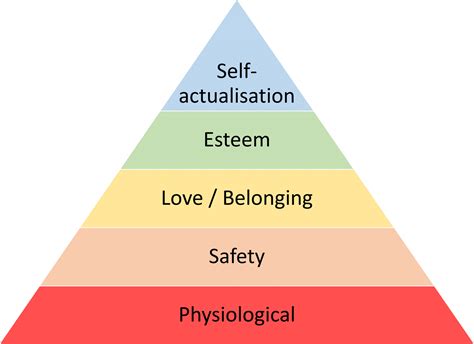Maslow deficiency needs vs growth needs

Maslow (1954) proposed that human beings possess two sets of needs. This five-stage model can be divided into deficiency needs and growth needs. The first four levels are often referred to as deficiency needs ( D-needs ), and the top level is known as growth or being needs ( B-needs ). Ver más This five-stage model can be divided into deficiency needs and growth needs. The first four levels are often referred to as deficiency needs (D … Ver más Maslow (1943, 1954) stated that people are motivated to achieve certain needs and that some needs take precedence over others. Our most basic need is for physical survival, and … Ver más Instead of focusing on psychopathologyand what goes wrong with people, Maslow (1943) formulated a more positive account … Ver más It is important to note that Maslow's (1943, 1954) five-stage model has been expanded to include cognitive and aesthetic needs (Maslow, 1970a) and later transcendence needs … Ver más Web21 de mar. de 2024 · Maslow’s hiring of needs is ampere motivational theory inside psychology comprising a five-tier model of human needs, often depicted as hierarchical levels in a pyramid. Maslow's Hierarchy of Needs / Psychology 1 FLVS Quizzes Flashcards
Maslow deficiency needs vs growth needs
Did you know?
WebSection 1: The Impact of Key Moments in Real Time. Since the key moments in films were identified based on different frameworks. (psychological motivations, the hero’s goals, and screenplay structure), the terminology. used will be consistent with Table 2, in an effort to improve clarity. “Key moments” will. Web6 de oct. de 2024 · Maslow identifies the first 4 stages as involving “deficiency” needs, while the 5th stage involves “growth” or “being” needs. Deficiency needs are motivating when they aren’t met. They’re characterised by a feeling of anxiety or tension when unfulfilled, and the motivation to fulfill them only gets stronger the longer they’re not met.
WebMaslow's (1954) influential theory suggests that children's ability to be motivated by “growth needs” (e.g., academic achievement) first requires satisfaction of “deficiency needs” (e.g ... Web13 de abr. de 2024 · Growth needs. According to Maslow’s theory, when we are speaking of growth needs it appears to indicate that this is more of a psychological need, and is …
Web7 de jun. de 2024 · Maslow referred to self-actualization as a “growth need,” and he separated it from the lower four levels on his hierarchy, which he called “deficiency … WebMaslow's hierarchy of needs can be separated into two types of needs; deficiency needs and growth needs: Deficiency needs: Physiological, security, social, and esteem …
WebDeficiency Needs vs. Growth Needs Maslow was under the impression that our needs are comparable to instincts, and the physiological, security, social, and esteem needs are deficiency needs, which come about out of a need for survival. These needs represent the bottom half of the pyramid. The highest tier of the pyramid is known as growth needs.
Web15 de sept. de 2024 · Maslow’s “Hierarchy of Needs” theory—which hypothesized that if human lower level “deficiency needs” were not met, higher level “growth needs” … the watermark apartments kirklandthe watermark apartments kirkland waWeb13 de ago. de 2013 · Self-actualization, according to Abraham Maslow, represents one's growth toward fulfilling their highest needs—i.e., meaning in life. Creativity attempts to resolve dichotomies such as ... the watermark at 3030 parkWeb11 de dic. de 2012 · Maslow's Hierarchy of Needs. Maslow called the bottom four levels of the pyramid "deficiency needs" because a person does not feel anything if they are met, but becomes anxious if they are not ... the watermark apartments norfolk vaWeb1 de sept. de 2012 · Maslow initially proposed that five basic needs — arranged in a hierarchy from lower-order to higher-order — are essential to optimal human existence. … the watermark at houston heightsWebAbraham Maslow’s perspective on motivation, deficiency-growth needs theory, has both similarities to, and differences from, instinct and drive theory. Like the originators of those … the watermark at houston heights houston txWebAbraham Maslow’s perspective on motivation, deficiency-growth needs theory, has both similarities to, and differences from, instinct and drive theory. Like the originators of those theories, Maslow proposes that people are born with innate needs that they strive to satisfy. However, in contrast to Freud and Hull, Maslow (1943, 1970) believes ... the watermark at broadway cityview